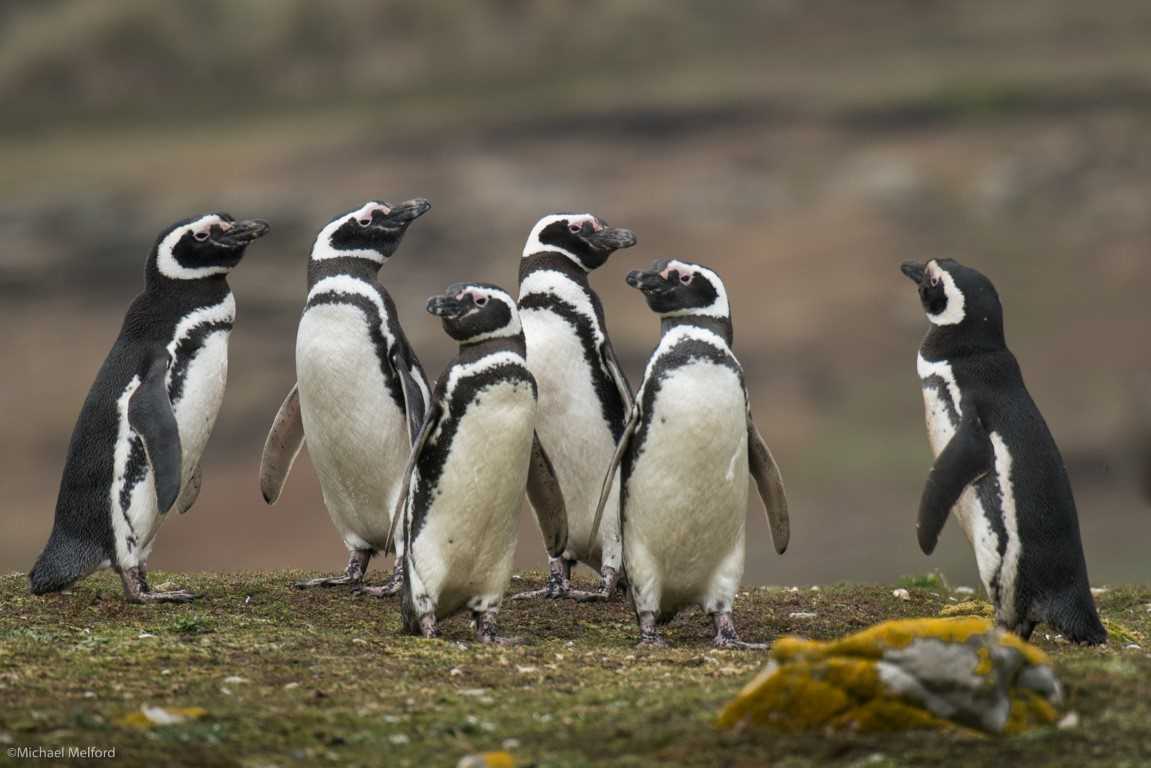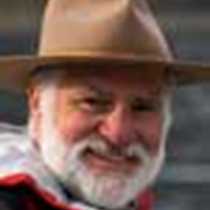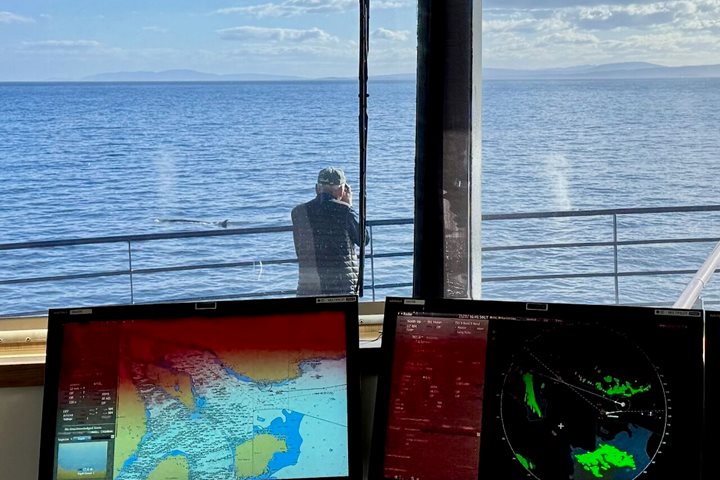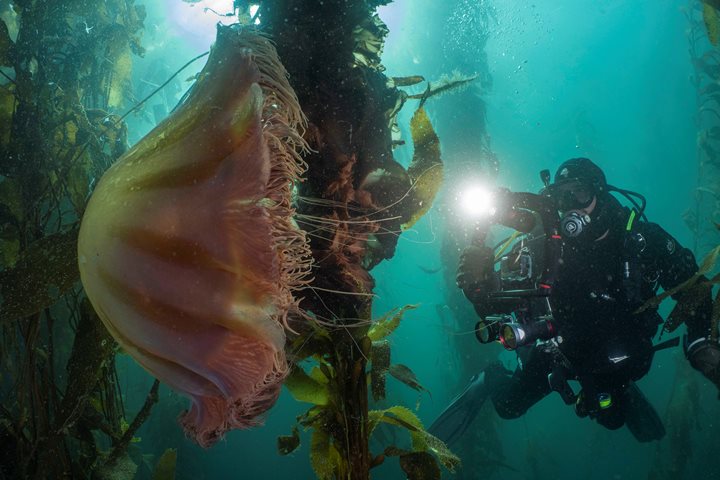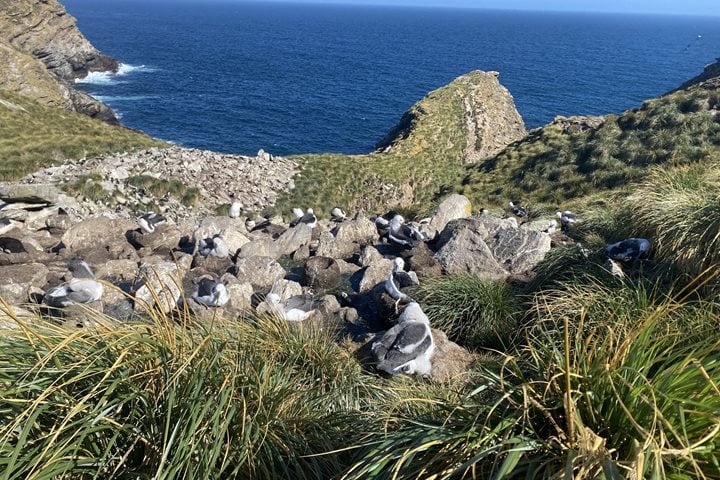Throughout the night the seas became calmer and calmer and we woke up to very different conditions to those faced yesterday; gray overcast skies and gentle, rolling waters. The seabirds numbered in the thousands and of particular interest were the common diving petrels flying out to their feeding grounds. As we approached West Point Island more and more seabirds were spotted as well as sea lions and dolphins.
During breakfast we made the final approach to Carcass Island, our destination for the morning. The options were three types of walks: long, medium and short. Soon enough the trusty Zodiacs were whizzing back and forth and leaving us at the different starting points.
The long hikers landed on a beautiful sandy beach and headed across a short distance to another beach. Along the way a number of birds were spotted including Magellanic and Gentoo penguins and Cobb’s wren. This little bird is endemic to the Falklands and is doing very well on this island, which has always been rat- and cat-free. As we made our way towards the settlement a number of other interesting plants and birds were spotted.
In the meantime, the medium and short walkers headed for the little pier close to the farm settlement and set off to see what they could see. There were siskins and long-tailed meadowlarks as well as many kelp geese and Patagonian crested ducks. The shrill calls of oystercatchers could be heard and the Johnny rooks were all over the place. These intelligent and curious birds of prey are an important feature of the islands. They often land close to the landing site allowing us to take their portraits and are unfazed by our presence.
At the end of our various walks we headed into the main house on the farm to enjoy a delicious tea. The table groaned under the weight of a rich assortment of scones and cookies. We tucked in heartily and chatted with our shipmates about the morning adventures. Reluctantly we headed for the Zodiacs and back to the ship as there were more adventures for the afternoon.
During lunch the ship weighed anchor and sailed the short distance to West Point Island. This destination is intimately linked with Lindblad’s history in the region, going back to the late ‘60s. Indeed some of Lars-Eric Lindblad’s ashes were spread in the lovely gardens of the main house.
Again there were three types of walks offered, all with the same final destination: the black-browed albatross and rockhopper colony on the other side of the island. We eagerly headed off and little could have prepared us for the sight that was soon to greet us.
Dramatic cliffs and craggy outcrops on the west coast covered in lichens, some of them bright orange, are home to the albatross and the penguins. We made our way down through the tussac grass and came to within a few feet of these magnificent birds. The regal albatross, many already incubating their single egg, others displaying and gently preening their mates with their gorgeous, pale orange bills, were a delectable sight. The rockhopper penguins were interspersed among the albatross nests, most of them were in the process of pair bonding, with much displaying and preening each other. They were a little noisier than the albatross and their punk-like, yellow hairstyles glowed brightly. The conditions could not have been more perfect, almost no wind and the gray skies made a giant light box for all the photographers, the gentle, even light allowing subtle colors to pop out at us.
We returned to the ship with our senses tingling and a warmth that filled our inner beings. We knew that we had just experienced something very special. Once on board we prepared for the Captain’s welcome cocktails where we had the opportunity to meet some of the senior officers, followed by the delicious welcome dinner. The chatter in the dinning room was lively and animated, as we all tried to recount the marvelous experiences from this wonderful first day. No doubt many of us slept very well, helped by the calm seas that accompanied us throughout the early night as we sailed for South Georgia.
Live from South Georgia—watch on Facebook!
Right now our climbing team is transiting the sub-Antarctic island of South Georgia making their way across the island to the ruins of Stromness whaling station. They are following in the footsteps of Sir Ernest Shackleton who made the same trek 100 years ago in a successful bid to save his entire crew of Endurance. Our trekkers will walk into Stromness tomorrow, and we’ll interview them live on National Geographic’s Facebook page!

